
WHAT COLOUR IS MY KITTEN?
I'm often sent photos asking "what colour is my kitten – I've looked all over the web and he isn't any colour I can find!" Many of those indefinable kitten colours are colours that haven’t fully developed (such as the ghost striping on black kittens) or are due to conditions in the womb before the kitten is born.
UNDEVELOPED COLOUR
Kittens are not necessarly born with their adult colour in place. For example, colourpoint kittens are born white and the colour develops over several weeks. This is because colourpointing is temperature dependent and the colour only develops fully on the cooler extremities. This can confuse the unwary as their kittens change pattern!

This black kitten had ghost stripes while young; these grew out as the kitten fur moulted and the adult fur grew in. Ghost stripes are common in solid colour kittens, but are not always so visible.
UNEXPECTED COLOURPOINTS, MINKS AND SEPIAS
In 2018, Chris sent me photos of 3 year olds Makali'I and Polinahe from Oahu, Hawaii. Makali'i is a very typical hazel-eyed black/brown tabby, and smaller Polinahe has paler markings, blue eyes, a black banded tail and black paw pads. As a kitten, Polinahe had a milky-coffee colour body and though this has darkened, it not “full colour” as his brother. The most likely explanation is the “mink” pattern more often found in Tonkinese cats, or sepia with blue eyes. “Mink” is intermediate in intensity between Siamese colourpointing (high contrast, blue eyes) and Burmese sepia (low contrast, usually copper eyes, but blue eyed individuals are known). Mink colour is associated with aqua or bluish eyes. They were abandoned storm drain kittens adopted at 6 weeks old from the Humane Society. A number of cats in that area have a somewhat Siamese appearance, so it’s likely that both the colourpoint and the sepia genes are in the gene pool.
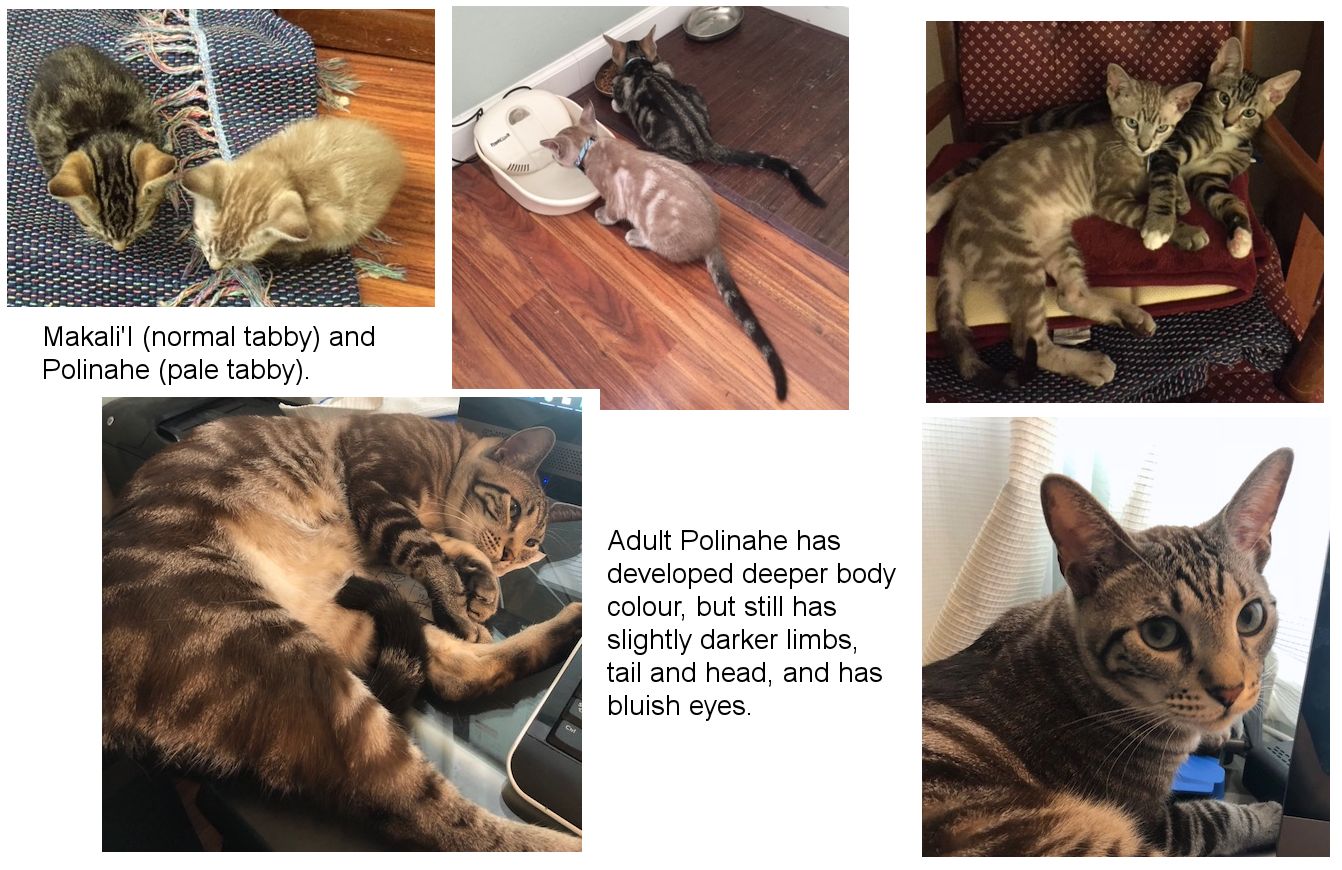
FEVER COAT
Fever coat usually means that the mother had an infection while pregnant or that she was stressed or on medication (the last condition can happen if the owner doesn’t realise their cat is pregnant). The kittens have the so called “fever coat” when born, but it fades and by the time they are about 6-8 months it has gone completely. Fever coat is means the pigments haven’t been properly deposited in the fur so it can appear silvery-grey, cream or reddish. In extreme cases, black smoke kittens have been born with what appears to be Siamese colouration – a creamy coloured body with black extremities.
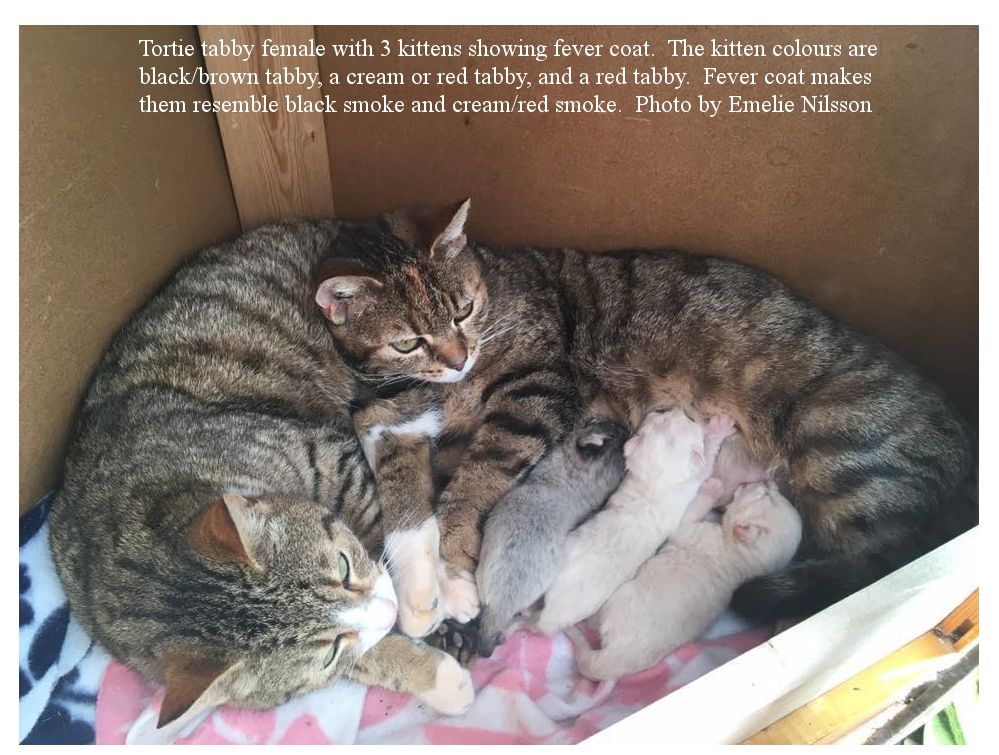
Below is a black kitten with fever coat. As it grew, the silvery and reddish fur grew out and a solid black colour replaced it.
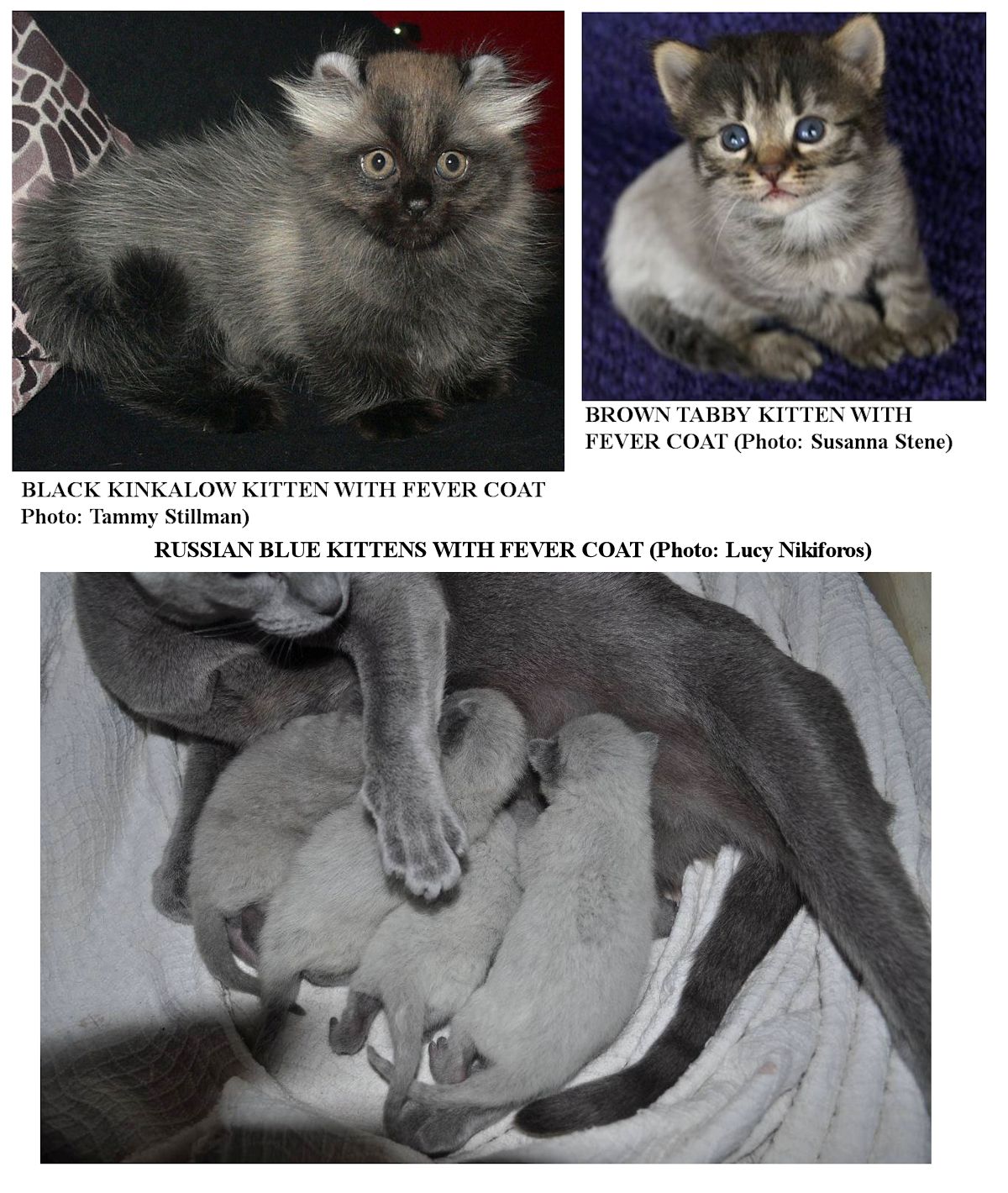
In 2017, Candice Prowting sent me some photos of fever coat in a non-pointed Ragdoll, bred by her husband (Soirca Ragdolls). The kitten had slight fever coat as a tiny kitten with white at the roots of the hairs at about 3/4 weeks old. He had his first vaccination at 9 weeks, but the whole litter had a few days where they were a bit quiet and off their food. Except for this kitten, they bounced back, but he was off his food for longer and lost weight, and was eating normally and fit and healthy by the time the 2nd vaccinations were due in December. A little later he sprouted a lot of white hairs, and they were still coming through in January. This appears to be fever coat, perhaps linked to his vaccination reaction.
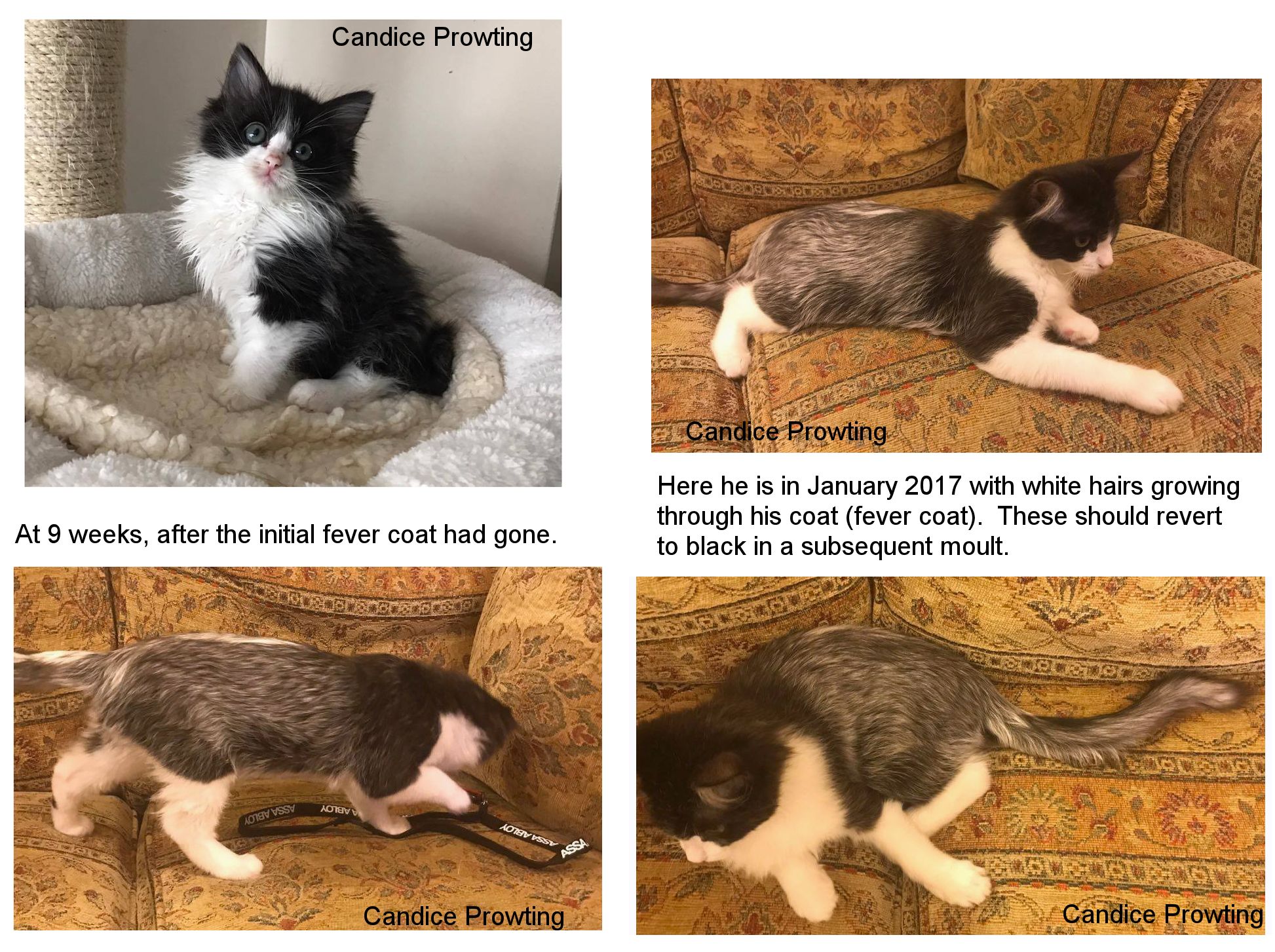
Beware of sellers advertising kittens with fever coat as a rare or unusual breed. In this Craigslist advert, a seller advertised a fever-coated kitten as a Lykoi. A Lykoi is distinguishable not jut by its roan coat, but also by partial hairlessness on the face and underside. When this kitten goes through its moult it will end up as a normal dark tortoiseshell adult coat and any buyer expecting a roan-coated Lykoi would be disappointed (and worse, might abandon the cat for not being a rare breed). Although the advert states the cat is a year old and a good mouser, the photo showed a kitten whose eyes had not changed colour. (A Lykoi breeder reported the advert as fraudulent.)
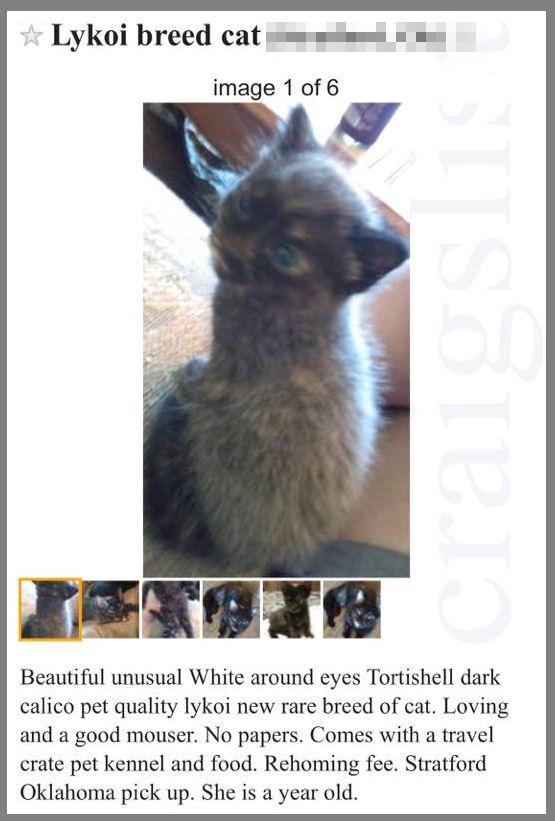
FEVER COAT - DORSAL STRIPES
In September 2015, Alaina Hickman, who works with a rescue group in Omaha, NE called Feline Friendz, sent me some photos of a black kitten, Gogo, that started developing parallel white stripes along her back. The stripes were becoming more pronounced as the kitten gets older. She also found a photo (screen grab shown) of a similar kitten named Jackson. The colour change may be a form of leukotrichia that starts along the back and includes the tail - it is similar to the cat depicted in the Thai manuscript - but is more likely to be "fever coat" which can develop in kittens and vanishes when the coat is moulted and the adult coat grows in. Genetically all cats are tabby (the addition of a double dose of the non-agouti gene turns the coat solid coloured) and you can see that the white has followed what would have been the dorsal stripe in a tabby cat. This is also seen on tabby and tortie kittens where the stripes along the back are greyish or reddish, giving a chipmunk appearance.
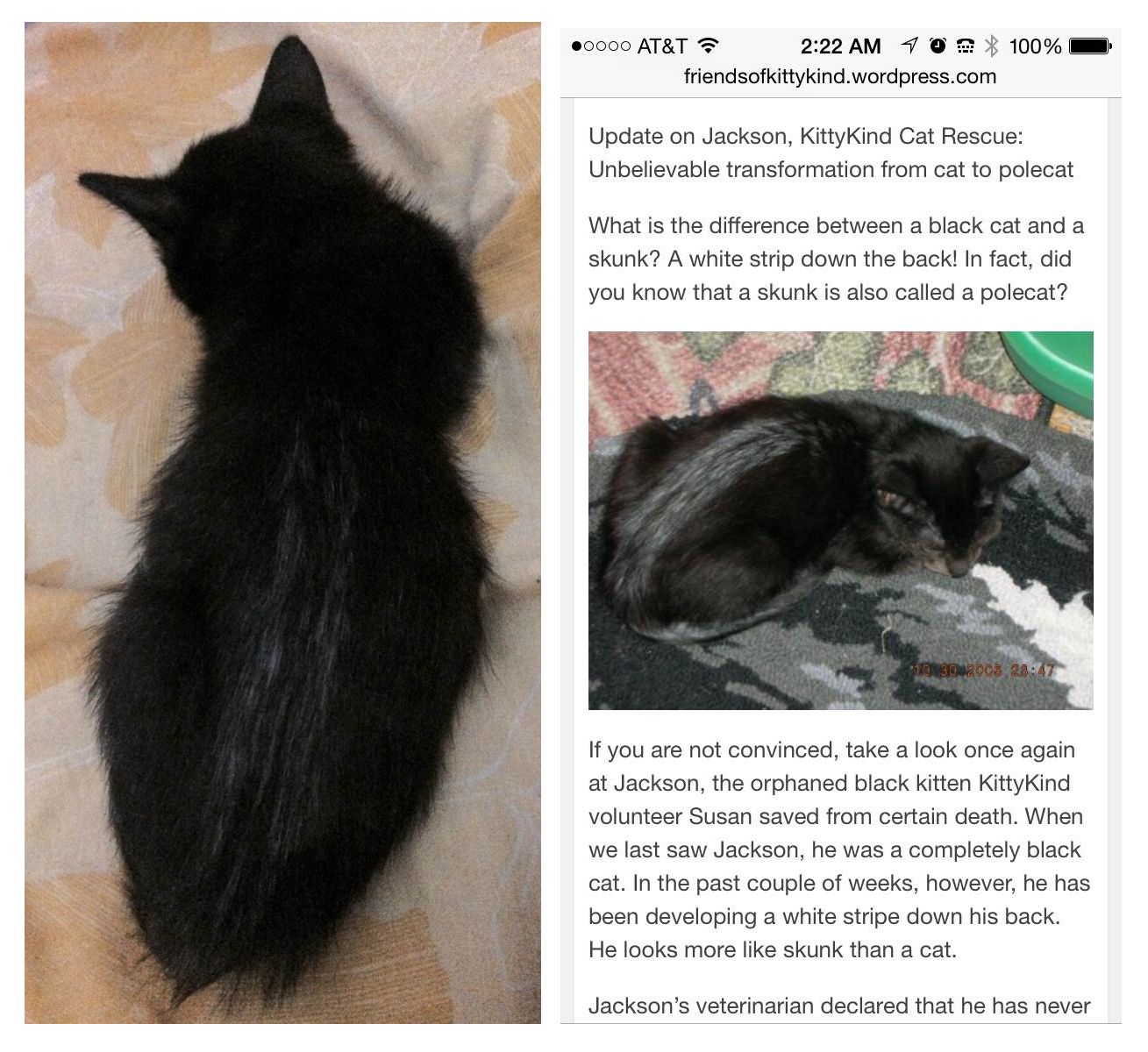
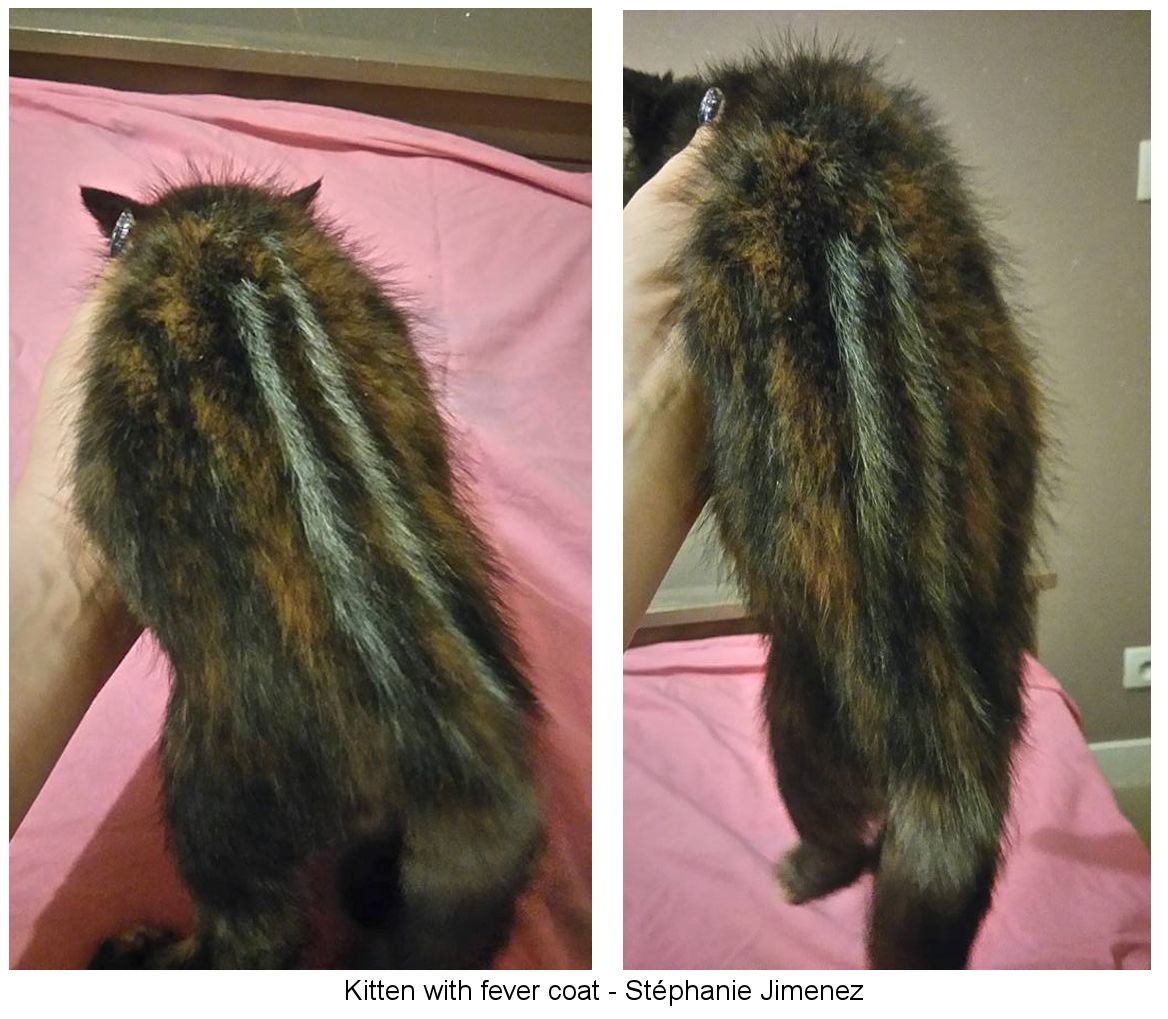
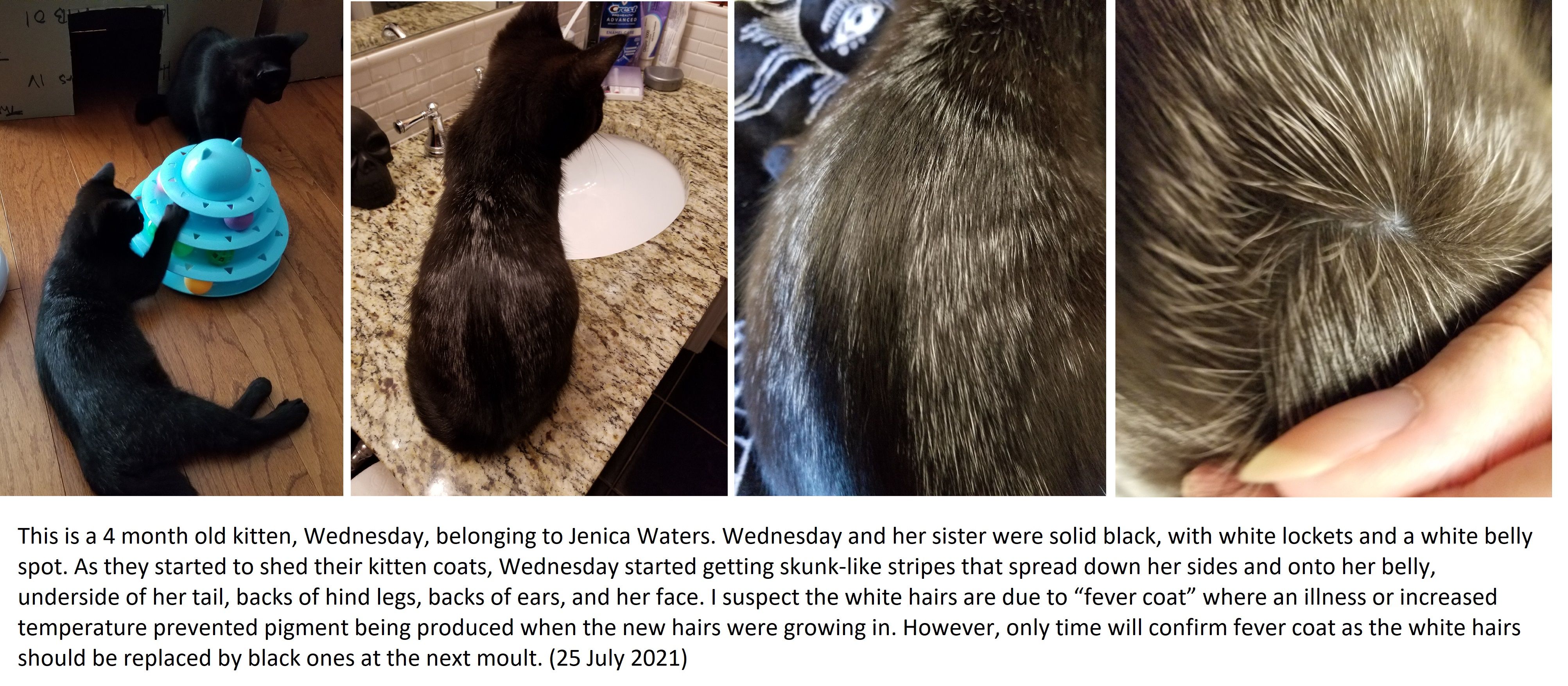
FEVER COAT WITHOUT THE FEVER - POSSIBLE GENETIC BASIS FOR "FROSTED" COAT
Judy Miller, Windrifter Siberians, has seen fever coat in kittens whose mothers did not have a raised temperature during pregnancy. In January 2020 she sent me details of her observations on what is termed "frosted" coat.
Fever coat is when a kitten is exposed to a higher than normal temperature in the womb, giving the babies an odd sort of colour/pattern similar to a colourpoint. This happens when the mother cat is ill. This effect disappears in a short time, and the kittens end up with normal coloration. This same temperature-dependant effect is seen on colourpoint kittens because the colourpoint genes are sensitive to heat at normal body temperature. Eventually, the cat will usually start showing its underlying colour/pattern as it ages, except for the blue eyes.
Throughout the years, I have seen and heard of traditionally coloured kittens that show this effect without the mother having a fever. These kittens are colourpoint carriers i.e. they are not colourpointed themselves, but they have one copy of the recessive colourpoint gene. My theory is that all kittens are sensitive to heat in the womb, but those with colourpoints are more-so than the others, and kittens that are colourpoint carriers - with only one colourpoint gene - may also be very heat sensitive. Not all colourpoint carriers show this effect, however, as I assume they need a higher temperature (but not a fever temperature) to produce this frosted look, just like their non-colourpoint parent. I have been calling these kittens from mothers who were not feverish, “frosted”, rather than fever coat, which doesn’t apply.